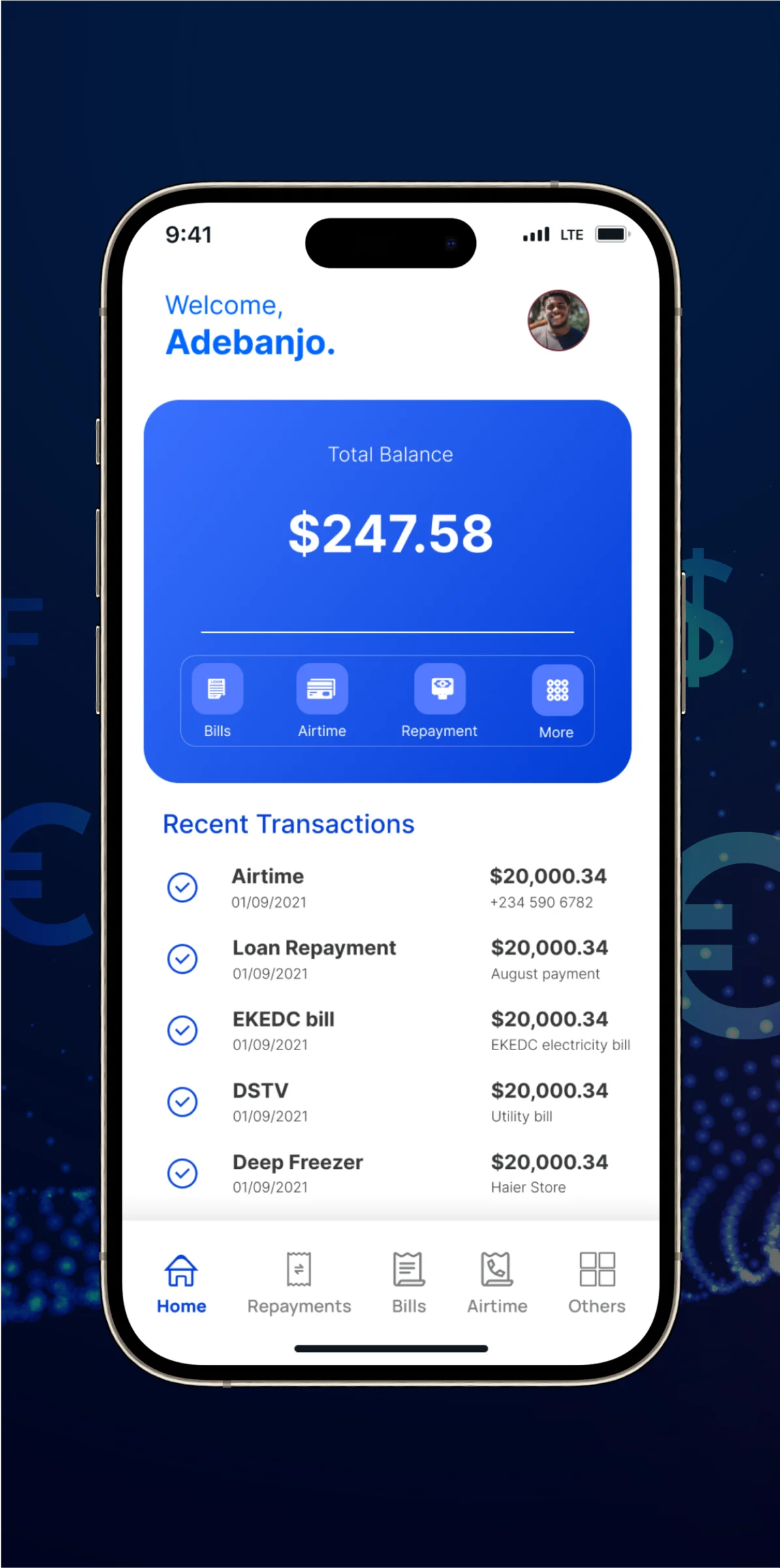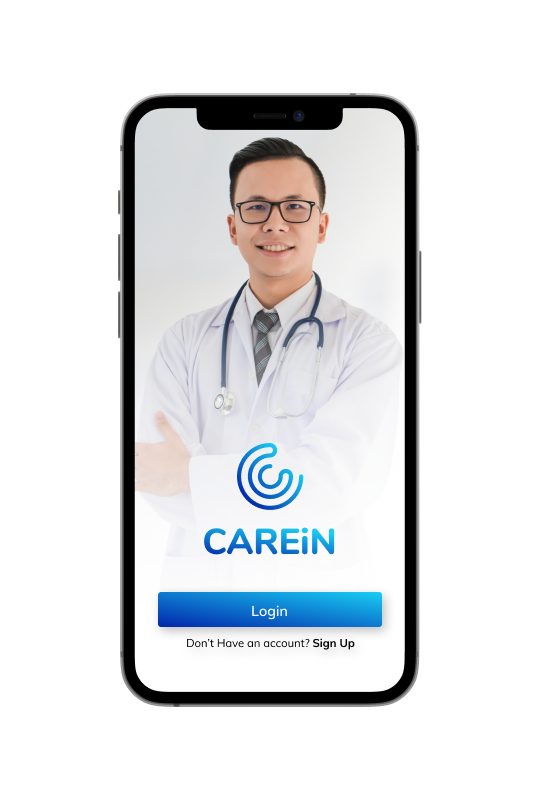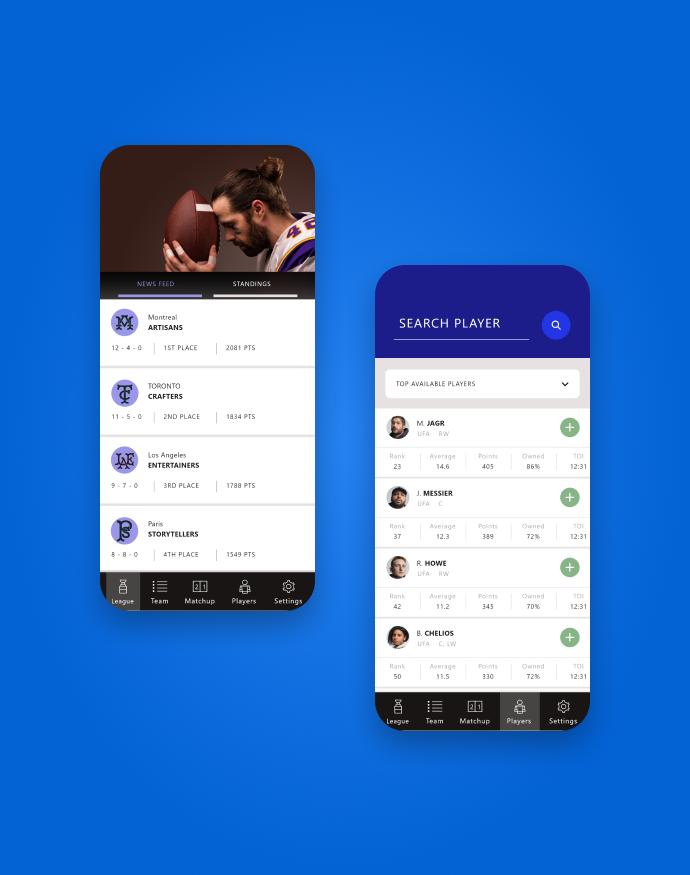- What is a Restaurant Management System?
- What are the Benefits of a Restaurant Management System?
- What is the Toast App?
- Restaurant Management Software Key Market Stats
- How To Develop an App Like Toast
- Problems Solved by Toast
- Must-Have Restaurant Management System Features
- Tech stack to consider
- Cost Affecting Factors To Develop Software Like Toast
- Challenges in Developing A Restaurant Management Software Like Toast
- Top Restaurant Management Software in 2023
- Conclusion
- How IdeaUsher Can Help
- FAQs
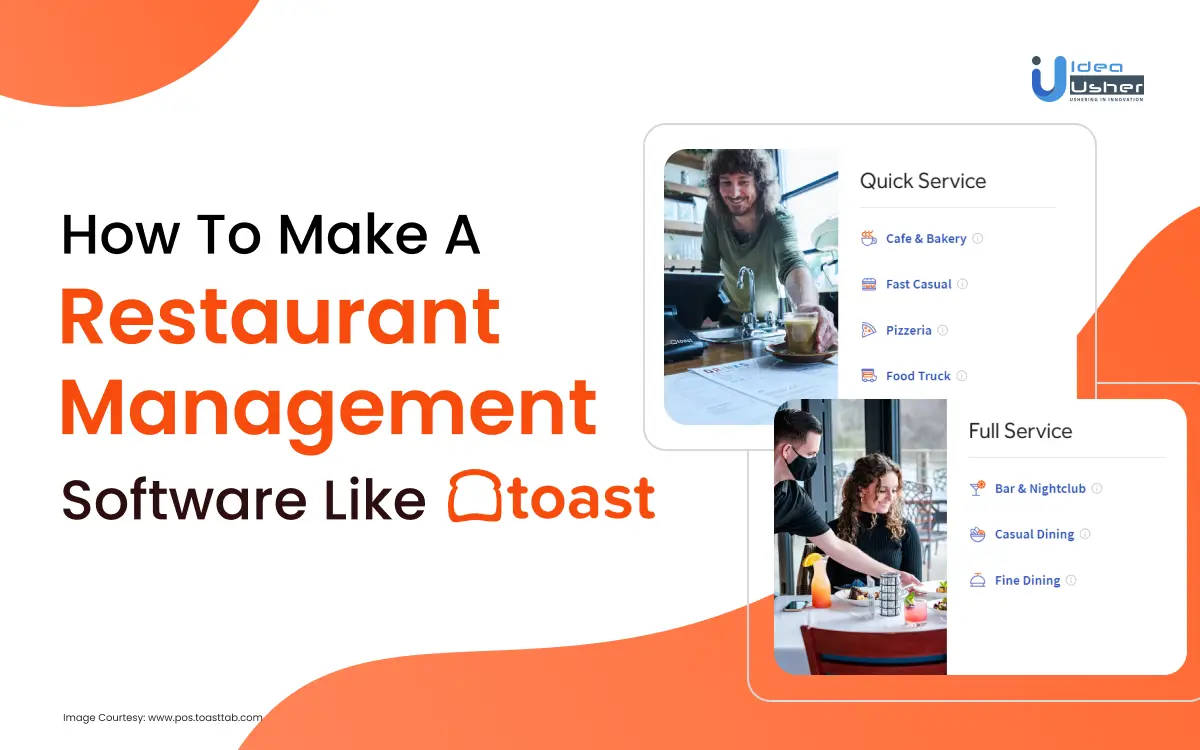
The restaurant industry is in the middle of a significant transformation. Successfully running a restaurant can be a daunting task, especially for those without prior experience or adequate support. This challenge involves dealing with both short-term and long-term issues. What was commonplace in restaurants just a few years ago is gradually being phased out in favor of more efficient and speedy operational methods. Thanks to innovation and technology, the entire landscape of restaurant management has undergone a revolutionary change. By harnessing the power of restaurant management software effectively, eateries can pave their way to prosperity.
Restaurant management software offers the comprehensive capability to oversee every facet of your restaurant’s operations. This, in turn, enables you to channel your focus towards perfecting your culinary offerings and enhancing the service you provide to your customers. If you’ve worked in the restaurant industry, you’re likely well aware of the challenges that arise when attempting to handle various issues manually. Even some of the most common point-of-sale software can sometimes fall short of meeting the complex needs of modern restaurants.
- What is a Restaurant Management System?
- What are the Benefits of a Restaurant Management System?
- What is the Toast App?
- Restaurant Management Software Key Market Stats
- How To Develop an App Like Toast
- Problems Solved by Toast
- Must-Have Restaurant Management System Features
- Tech stack to consider
- Cost Affecting Factors To Develop Software Like Toast
- Challenges in Developing A Restaurant Management Software Like Toast
- Top Restaurant Management Software in 2023
- Conclusion
- How IdeaUsher Can Help
- FAQs
What is a Restaurant Management System?
A restaurant management system, often referred to as an RMS, is a comprehensive software application designed to streamline and enhance the various aspects of running a food business. This digital solution is a valuable tool for a wide range of culinary establishments, such as cafes, bars, bakeries, food trucks, and, of course, restaurants. Its multifaceted capabilities cover a broad spectrum of operations, making it an indispensable asset for those in the food industry. From managing orders to processing payments and ensuring seamless reconciliation, an RMS is the ultimate kitchen companion. But its functions extend far beyond the back of the house.
One of the key elements of an RMS is the point of sale system, a central hub for processing customer orders and transactions. This is where patrons place their orders, and payments are accepted, ensuring a smooth and efficient dining experience. Additionally, inventory management is a crucial aspect of an RMS, allowing restaurants to keep track of their ingredients and supplies, preventing unnecessary waste, and ensuring that popular dishes are always available.
Marketing is another essential component of restaurant management software. In a highly competitive industry, effective marketing strategies are vital for attracting and retaining customers. An RMS can help restaurants craft and execute marketing campaigns, from promotions and discounts to loyalty programs, to keep patrons coming back for more.
Building an online presence is also an integral part of a restaurant’s success in the digital age. An RMS can aid in creating and managing the restaurant’s online presence, from maintaining a user-friendly website to ensuring a strong social media presence. This visibility is critical to attracting new customers and engaging with loyal ones.
What are the Benefits of a Restaurant Management System?
A well-implemented RMS offers a plethora of benefits, from tracking sales and enhancing customer service to efficiently managing staff and providing easy data accessibility. Let’s delve into these advantages:
Tracking Sales for Precision and Profitability
A restaurant’s essential is its sales, and an RMS acts as its vigilant heart monitor. Every transaction is meticulously captured, ensuring the accuracy of your sales data. Moreover, this data can be categorized, allowing you to identify best-selling items, preferred payment methods, and even your most loyal customers. This information empowers you to tailor your offerings and marketing efforts, ultimately increasing your profitability.
Elevating Customer Service Through Data
Customers are an important part of your business, and an RMS can help you foster a deeper connection with them. By recording customer details, preferences, and feedback, you can provide a more personalized and satisfactory experience. You can also create targeted promotional campaigns based on past orders, transforming casual patrons into loyal customers. Features like online payment and table reservations further enhance convenience, making your restaurant a go-to choice.
Accurate Financial Statements Made Easy
Say goodbye to manual errors and unreliable record-keeping. An RMS records every transaction with precision, including items sold, service provider details, and timestamps. This treasure trove of data facilitates the generation of accurate financial reports with just a few clicks. Financial transparency not only saves you time but also safeguards your restaurant’s financial integrity.
Efficient Staff Management
For a restaurant to run smoothly, staffing must be synchronized with customer demand. An RMS equipped with an employee scheduler ensures that you have the right number of staff during peak hours, minimizing idle time. By aligning staff schedules with sales figures, you can optimize resource allocation, ensuring your workforce is neither overburdened nor underutilized.
Streamlined Staff Communication for Speed and Accuracy
Efficient communication among your staff is vital for a seamless dining experience. A handheld device integrated with the RMS allows waitstaff to transmit orders directly to the cashier and kitchen, reducing billing errors and expediting food preparation. This means shorter wait times for your customers and increased efficiency in your operations.
Data Accessibility Anywhere, Anytime
The era of cloud-hosted restaurant management software has ushered in the ability to access vital data remotely. Whether you’re on the go or presenting to clients and investors, you can retrieve real-time sales information and monitor employee performance. This convenience enables you to manage your restaurant even when you’re not on-site, ensuring you stay updated on your business’s performance.
User-Friendly Interface
Restaurant management systems are designed with simplicity in mind. The user-friendly interface allows even new employees to interact effectively with the system, reducing the learning curve and minimizing errors.
Enhancing Security
Protecting your restaurant from losses due to fraud and theft is paramount. A comprehensive RMS comes equipped with security tools to safeguard your business. These measures offer peace of mind and ensure that your hard-earned profits remain where they belong – in your pocket.
Inventory Management for Cost Control
Efficient inventory management is crucial for cost control. An RMS helps track your stock levels in real-time, ensuring that you never run out of key ingredients and minimizing wastage. It can also provide insights into which items are slow-moving, allowing you to adjust your menu accordingly.
Enhanced Table Turnover
For restaurants, especially those with limited seating, table turnover is vital for maximizing profits. An RMS can optimize table assignments and reservations, reducing customer wait times and ensuring a steady flow of diners.
Compliance and Reporting
In an industry heavily regulated in terms of food safety and health standards, an RMS can generate reports that aid in compliance with local regulations. This feature is especially valuable during health inspections and audits.
Streamlined Online Ordering
As more customers seek the convenience of online ordering, integrating your RMS with your online platform is essential. It ensures that orders are accurately captured and transmitted to the kitchen while maintaining a seamless customer experience.
What is the Toast App?
Toast is a comprehensive restaurant point-of-sale (POS) system and management platform that has gained significant traction in the food service industry. This innovative solution caters to the diverse needs of restaurants, cafes, and other food establishments, streamlining their operations and enhancing the overall customer experience. With a user-friendly interface and a wide range of features, Toast has become a go-to choice for businesses looking to modernize their operations. Here are some key features and aspects of Toast:
Order Management
Toast’s order management system is at the core of its functionality. It allows restaurants to efficiently handle incoming orders. This can include in-house dining orders, takeout orders, and orders for food delivery. The system provides a user-friendly interface for restaurant staff to enter and process orders, ensuring that they are accurately recorded and sent to the kitchen or bar for preparation.
Menu Customization
Restaurants can customize their menus to meet their specific needs. This includes the ability to add, remove, or modify menu items. Customization may extend to adding descriptions, images, and prices for each item. This helps customers make informed choices.
Payment Processing
Toast supports various payment methods, making it convenient for customers. This includes traditional credit card payments as well as newer payment options such as mobile wallets (e.g., Apple Pay or Google Pay). It also handles tasks like splitting checks among diners and recording tips for service staff.
Inventory Management
Toast’s inventory management features enable restaurants to keep track of the ingredients and supplies they have on hand. By monitoring inventory levels and ingredient usage, businesses can reduce waste and ensure they always have the necessary items to fulfill orders.
Reporting and Analytics
Toast provides reporting and analytics tools that give restaurant owners and managers insights into their business performance. Reports can include data on sales trends, peak hours, popular menu items, and more. This data helps with decision-making and business optimization.
Kitchen Display System
Toast’s kitchen display system enhances communication between the front of the house (waitstaff and order entry) and the kitchen. Orders are displayed on screens in the kitchen, reducing the need for paper tickets. This streamlines food preparation and minimizes errors.
Customer Relationship Management (CRM)
Toast’s CRM tools allow restaurants to collect and store customer data. This can include contact information, dining preferences, and order history. With this data, restaurants can provide personalized experiences and targeted marketing to retain and attract customers.
Employee Management
The system supports employee management by helping with tasks like creating schedules, tracking work hours, and managing payroll. This simplifies staffing management and ensures employees are compensated accurately.
Online Ordering and Delivery
Toast can integrate with online ordering and delivery platforms, such as Uber Eats or DoorDash. This enables restaurants to expand their reach and serve customers who prefer ordering online or having their food delivered.
Restaurant Management Software Key Market Stats
Source: Grand View Research
Here are some key stats for the Restaurant Management Software market:
- Factors driving growth include a rising number of restaurants, increased use of cloud technology, and growing acceptance of Quick Service Restaurant (QSR) services.
- COVID-19 led to temporary restaurant closures and reduced dine-in customers, but point-of-sale (POS) solutions facilitated contactless payments.
- In 2022, Android-based front-end software captured a 35.6% market share due to its cost-effectiveness and user-friendliness.
- Cross-platform technologies supporting both Android and iOS are becoming more prevalent.
- The table & delivery management segment is set to grow at an 18.8% CAGR, driven by a focus on superior customer experiences and the need to retain customers.
- Increased internet and smartphone use empower customers to seek innovative restaurant services, prompting restaurant owners to adopt management software solutions.
How To Develop an App Like Toast
Developing an app akin to Toast, comprehensive restaurant management and point-of-sale (POS) software, is a multifaceted process that demands careful planning, execution, and continuous improvement. Here is a model of steps that you can consider:
In-Depth Market Research and Planning
Initiate your journey with thorough market research. Gain a deep understanding of the restaurant industry and its multifaceted needs. Delve into market segmentation, recognizing that various types of restaurants may have distinct requirements. Additionally, perform a competitive analysis, dissecting platforms like Toast to grasp their feature sets, pricing models, and customer feedback. The insights gleaned will serve as the bedrock for your app’s development and marketing strategies.
Conceptualize Your App
Once well-versed in the restaurant landscape, it’s time to conceptualize your app. Define the core features your app will offer, such as order management, payment processing, table management, and comprehensive reporting. Make a crucial decision regarding the app’s deployment – whether it will be cloud-based, accessible via the internet, or a traditional on-premises solution installed directly on restaurant hardware.
Choose the Right Technology Stack
Your technology stack selection is pivotal. Opt for the appropriate programming languages, databases, and frameworks. These choices must align seamlessly with your scalability and performance objectives.
Compliance and Regulations
Navigate the intricacies of local and international regulations associated with payment processing, data security, and privacy. Compliance is non-negotiable when handling sensitive payment information and customer data.
Design the User Interface (UI)
Craft an intuitive, user-friendly user interface (UI) for your app. The UI design should cater to the needs of both restaurant staff and customers. Prioritize factors such as menu navigation, order placement, and payment processing to enhance the overall user experience.
Development
The development phase encompasses building both the backend and front-end components of your app. Implement core features like order processing, payment handling, and efficient inventory management. Flexibility and customizability, including menu management and reporting, are paramount to meet the diverse requirements of restaurants.
Integration
Ensure your app integrates seamlessly with essential components, such as payment gateways, third-party services (for online ordering, for instance), and compatible hardware like printers and card readers. A harmonious integration with these various facets of restaurant operations is fundamental for a successful POS system.
Testing
Rigorously test your app for functionality, security, and performance. Verify that all features function flawlessly and carry out comprehensive quality assurance to identify and resolve any issues or bugs.
Prioritize Security
Employ robust security measures to safeguard sensitive customer and payment data. This includes encryption, user authentication, and access control to ensure the highest levels of security.
Launch and Deployment
Once development and testing are complete, launch your app on the selected platforms. Decide whether your app will be web-based, mobile, or a combination of both, aligning with the preferences of your target users.
Training and Support
Provide comprehensive training and support to empower restaurant staff with the knowledge to effectively use the app. Offering training materials and a responsive support system is vital to ensure the successful adoption of your software.
Marketing and Sales
Develop a robust marketing strategy to promote your app to restaurants. Use digital marketing platforms for better reach. Establish pricing models that resonate with your target market, whether it comprises small businesses, large chains, or a combination of both.
Feedback and Iteration
Continuously gather feedback from early users and iterate on your app. This iterative process enables you to refine features, enhance performance, and address any issues that may arise.
Scalability
Design your app to effortlessly accommodate the scalability needs of burgeoning restaurant businesses. The capacity to handle a growing number of users and orders is pivotal.
Maintenance and Updates
Regularly update and maintain your app, addressing bugs, and security vulnerabilities, and introducing feature enhancements based on user feedback and industry trends.
Customer Support
Maintain an efficient and responsive customer support system to promptly address any issues or queries from restaurant owners and staff, ensuring their satisfaction.
Monitoring and Analytics
Implement analytics tools to monitor app usage and collect data to guide future improvements. Understanding how customers and restaurants utilize your app is integral to ongoing enhancements.
Data Backup and Recovery
Ensure that robust data backup and recovery procedures are in place to safeguard against data loss. The security of restaurant data, encompassing orders, customer information, and financial transactions, is paramount.
Sustainability
Ponder the long-term viability of your app in a swiftly evolving industry. Stay up-to-date with emerging technologies and trends to remain competitive and continually valuable to your target audience.
Feedback Loop
Establish a feedback loop with restaurant owners and staff, fostering an open line of communication to understand their evolving needs and preferences. This continual dialogue ensures that your app remains in sync with the ever-changing demands of the restaurant industry.
Problems Solved by Toast
A restaurant management and POS app efficiently resolves multiple challenges faced by the restaurant industry. By providing accurate order and inventory management, secure payment processing, and tools for reservation management and menu customization, these apps empower restaurants to enhance their operations and customer experiences. Additionally, they support data-driven decisions through sales reporting and analytics, facilitate customer relationship management, reduce manual tasks, and ensure compliance and security. The scalability of these apps caters to establishments of all sizes, contributing to their widespread adoption and success in the restaurant industry.
Let’s understand the problems solved by a restaurant management and point-of-sale (POS) app in detail:
Order and Inventory Management
Problem: Restaurants frequently grapple with managing orders and inventory efficiently. Manual processes can lead to confusion, human errors, and the risk of running out of crucial ingredients.
Solution: A restaurant management app streamlines the order process, allowing staff to input orders accurately, which reduces errors. It also provides real-time inventory tracking, ensuring that restaurants are always well-stocked and prepared to fulfill orders promptly.
Payment Processing
Problem: Processing payments accurately and securely is paramount for any restaurant. Manual cash handling can lead to errors, and older POS systems may lack security features.
Solution: Modern restaurant management apps offer secure and efficient payment processing. They accept various payment methods, including credit cards and digital wallets, reducing the risk of errors. Enhanced security features protect sensitive financial information, instilling trust in both staff and customers.
Table and Reservation Management
Problem: Managing table reservations and optimizing seating can be a logistical challenge. Without an organized system, restaurants may face issues with overbooking or underutilized space.
Solution: These apps provide table and reservation management tools that allow restaurants to allocate tables effectively, track occupancy, and prevent overbooking. Customers can reserve tables in advance, enhancing the dining experience.
Menu Customization
Problem: Static menus can hinder a restaurant’s ability to adapt to changing customer preferences, seasonal ingredients, or dietary requirements.
Solution: Restaurant management apps empower owners to customize menus easily. They can add or remove items, adjust prices, and indicate dietary information in real-time. This agility ensures that the menu remains up-to-date and aligned with customer expectations.
Sales Reporting and Analytics
Problem: Many restaurants struggle to analyze their sales data effectively, which makes it challenging to make informed decisions and identify top-performing items.
Solution: These apps offer robust sales reporting and analytics, presenting data in an understandable format. Restaurant owners can access insights into sales trends, customer behavior, and popular menu items, allowing them to make data-driven decisions that improve business performance.
Customer Relationship Management
Problem: Building and maintaining customer relationships can be difficult without tools for personalized promotions, loyalty programs, and customer feedback.
Solution: Restaurant management apps often feature customer relationship management (CRM) capabilities. They help restaurants create and manage loyalty programs, send personalized promotions to regular customers, and gather feedback to continuously improve services.
Reduction of Manual Tasks
Problem: Routine manual tasks, such as order processing and bill generation, are time-consuming and prone to errors.
Solution: Automation of these tasks through a restaurant management app reduces the burden on staff, minimizes errors, and accelerates service. It frees up employees to focus on providing excellent customer service.
Integration with Third-Party Services
Problem: Restaurants aiming to offer delivery services or expand their reach via online platforms may face challenges in integrating with third-party services.
Solution: Restaurant management apps facilitate integration with third-party delivery services, streamlining the process of offering online delivery. This extends the restaurant’s reach and revenue potential.
Security and Compliance
Problem: Handling sensitive customer and payment data raises concerns about security and compliance with payment industry regulations.
Solution: Restaurant management apps prioritize data security, using encryption and secure protocols to protect customer and financial data. They also ensure compliance with industry standards, reducing the risk of fraud and data breaches.
Scalability
Problem: Restaurants vary in size, from small cafes to large chains, each with different operational needs.
Solution: These apps are designed to scale, making them suitable for establishments of all sizes. They can adapt to growing businesses and cater to diverse requirements.
Enhanced Customer Experience
Problem: Ensuring a smooth and enjoyable dining experience for customers can be challenging with manual processes and outdated technology.
Solution: Restaurant management apps enhance the overall customer experience by improving order accuracy, streamlining payments, and offering online ordering and payment options. These features contribute to customer satisfaction and loyalty.
Remote Management
Problem: The COVID-19 pandemic highlighted the need for remote management solutions as owners and managers couldn’t always be on-site to oversee operations.
Solution: Some restaurant management apps introduced remote management features, allowing owners and managers to monitor and control various aspects of their restaurants from anywhere with an internet connection. This flexibility ensures continued business operations and adaptability in challenging circumstances.
Must-Have Restaurant Management System Features
Creating a comprehensive restaurant management system (RMS) is vital for streamlining operations and enhancing customer experience. Here’s a unique elaboration of the essential features to consider when building an RMS:
Absolutely, let’s delve deeper into each essential feature of a restaurant management system (RMS):
Sales and Tax Tracking
Your RMS serves as the nerve center of your restaurant’s financial data. Beyond just tracking sales, it provides granular insights into your business’s performance. This means not only knowing which items are selling but precisely when they sell the most. With this data, you can optimize your staffing and inventory levels to match peak demand. Identifying your top-performing team members allows you to reward and incentivize excellence. Moreover, accurate tax records are vital for regulatory compliance. Your RMS should effortlessly generate these records, saving time and preventing potential audit issues.
Order Management
Efficient order management is crucial for smooth restaurant operations. An advanced RMS streamlines table assignments and reservations, simplifying the customer experience. For staff, the system makes menu modifications a breeze, allowing them to accommodate special requests or dietary restrictions. It also offers a real-time view of order statuses, helping waitstaff coordinate service seamlessly. The ability to control voids, refunds, and complimentary items safeguards your profits. For bars, the pre-authorization of credit cards to open tabs enhances the speed of service and ensures customers can start enjoying their beverages promptly.
Inventory Management
Inventory management within your RMS offers more than just tracking stock levels. It provides real-time data on ingredient quantities, helping you manage your kitchen efficiently. It triggers reorder alerts when the stock reaches a specified minimum, reducing the risk of running out of crucial items mid-service. The result is fewer disruptions, less wastage, and a more cost-effective operation.
Reporting and Customer Data
Your RMS is not just a data repository; it’s a strategic tool. By tracking and filtering customer and sales data, it enables you to make data-driven decisions. For instance, you can identify your most loyal customers, tailor marketing campaigns to their preferences, and reward their loyalty. Moreover, you can pinpoint underperforming menu items and make necessary adjustments to boost profitability. Detailed reports allow you to assess your business’s performance over time, helping you to adapt and thrive in a competitive industry.
Gift Coupons and Referral Programs
Encourage repeat business and word-of-mouth marketing with gift coupons and referral programs. When customers receive discounts through referrals or gift coupons, they feel appreciated and more likely to return. These programs can also introduce new customers to your restaurant, expanding your customer base.
Interactive Menu
The menu is the first interaction customers have with your restaurant. An interactive menu should be visually appealing and user-friendly. Customers should be able to easily browse through the categories and find the dishes they desire. A one-click ordering feature for repeat customers can significantly enhance convenience, speeding up the ordering process and boosting customer satisfaction.
Online Ordering and Pre-ordering
Modern customers seek convenience. Online ordering and pre-ordering features enable customers to choose the delivery time that suits them, making it ideal for parties or gatherings. Not only does this save time, but it also promotes positive word-of-mouth recommendations, as satisfied customers share their experience with others.
Table Reservations
The table reservation feature should make booking a table a breeze. Customers can select their preferred table, place orders in advance, and even make modifications or cancellations without hassle. The convenience of this feature is not only beneficial to customers but also helps you manage table turnover efficiently, increasing revenue.
Online Payments Processing
The online payment feature should offer multiple options, including PayPal, debit cards, and credit cards. This flexibility simplifies the payment process for customers and is especially useful when diners want to pay individually within a group. It ensures accuracy and convenience while settling the bill.
Tech stack to consider
| Features | Description |
| Front-End Development | JavaScript/TypeScriptReact or AngularHTML/CSS |
| Back-End Development | Node.js or PythonFramework: Express.js or Django |
| Database | PostgreSQL or MySQL (RDBMS)MongoDB (NoSQL, if needed) |
| Cloud Services | AWS, Azure, or GCP (Cloud Hosting)Serverless computing for automatic scaling |
| API Integration | RESTful APIs or GraphQL |
| Payment Processing | Payment gateways like Stripe or Square |
| User Authentication | Passport.js or Django authentication |
| Real-Time Functionality | WebSockets for real-time updates |
| DevOps and Deployment | Docker, Jenkins, Travis CI, Kubernetes |
| Security | HTTPS, encryption, and regular security audits |
| Monitoring and Analytics | Tools like New Relic, Splunk, or Google Analytics for performance and user behavior analysis. |
| Mobile App Development (Optional) | React Native, Swift (iOS), or Kotlin (Android) |
Cost Affecting Factors To Develop Software Like Toast
The cost of developing software like Toast, a restaurant management and point-of-sale (POS) system, can vary significantly depending on various factors. Here are the key cost-affecting factors to consider:
Scope and Features
The scope and complexity of your software are primary cost determinants. More extensive features like inventory management, table reservations, and customer analytics demand additional development time and resources. As you expand the feature set, development costs proportionally increase.
Development Team
The composition of your development team influences costs significantly. Hiring experienced and skilled developers may be more expensive but can expedite the development process and enhance the software’s quality. A competent team can help you avoid costly revisions and delays.
Technology Stack
Your choice of technology stack affects costs in multiple ways. Specialized technologies may require higher development costs due to the need for developers with specific expertise. Additionally, some technologies offer ready-made solutions for certain features, potentially reducing development expenses.
Customization
Offering high levels of customization to cater to individual restaurant clients can increase costs. Tailoring the software to each client’s unique requirements may necessitate additional development time and resources. Striking a balance between customization and standardization is essential to manage costs effectively.
Integration
Integrating with third-party services such as payment gateways and online ordering platforms can be both advantageous and costly. Integration often involves adapting to various APIs and systems, which requires additional development work and may lead to increased expenses.
Mobile App Development (if applicable)
Developing mobile apps for both iOS and Android platforms adds to the overall expenses. Each platform demands its design, development, and testing, which can be a significant investment. It’s important to consider the potential benefits against the increased development costs.
Security and Compliance
Prioritizing security and compliance with industry regulations, especially in handling payment data, is crucial but may require additional investments. Ensuring data protection through encryption, access controls, and regular security audits adds to the cost but safeguards sensitive information.
Testing and Quality Assurance
Rigorous testing and quality assurance are essential for delivering a reliable product. Investing in comprehensive testing procedures may increase costs, but it ensures a more stable and trustworthy software that reduces long-term support expenses.
Scalability
Designing your software to be scalable for restaurants of various sizes is a key consideration. Scalability may require additional development effort to accommodate a growing number of users, orders, and locations. Failing to plan for scalability can result in future costly redesigns.
User Support and Maintenance
Ongoing user support, software updates, bug fixes, and maintenance are crucial for the software’s longevity and customer satisfaction. Allocating resources and budgets for these activities ensures the software remains functional and up-to-date.
Marketing and Sales
Successfully promoting and selling your software in the competitive restaurant management market involves marketing and sales expenses. These efforts include advertising, content creation, and sales team salaries. These costs are necessary to attract clients and generate revenue.
Regulatory Compliance
Compliance with payment industry regulations and other local or international requirements is imperative but can introduce legal and consulting expenses. Ensuring your software adheres to data protection and financial regulations is essential, even if it adds to the cost.
Infrastructure and Hosting
Costs related to server infrastructure, cloud hosting, and data storage should be factored in. Scalable hosting solutions may incur ongoing expenses based on usage, while dedicated infrastructure might involve upfront investments.
Geographic Location
The geographic location of your development team plays a pivotal role in cost management. Outsourcing development to countries with lower labor costs can be a cost-saving option, but it’s essential to strike a balance between cost and quality.
Project Timeline
Rushed development, often driven by tight project timelines, can result in increased costs. Tight deadlines may necessitate more resources, potentially leading to higher expenses. Adequate time allocation is key to controlling development expenses.
Contingency Budget
Allocating a contingency budget for unforeseen issues or additional features requested by clients is a prudent financial strategy. Unplanned developments or unforeseen complications can arise during the development process, necessitating additional resources.
Challenges in Developing A Restaurant Management Software Like Toast
Developing a restaurant management software similar to Toast comes with various challenges due to the complexity and multifaceted nature of the restaurant industry. Navigating these challenges requires a multi-faceted approach that encompasses technology, user experience, compliance, and market competition. Careful planning, a responsive development team, and adaptability are key to successfully overcoming these obstacles and delivering competitive restaurant management software. Here are the key challenges you may encounter in this endeavor:
Diverse Restaurant Needs
The restaurant industry encompasses an array of establishments, from small, family-owned diners to large, multi-location chains. Each has its own unique needs and operational intricacies. Building software that can effectively cater to these varying requirements, while maintaining a unified core system, is a complex challenge. It requires a flexible architecture that can be customized to accommodate different restaurant types.
User Interface Design
Crafting an intuitive and user-friendly interface is a critical challenge. The software must cater to both restaurant staff, who require efficient order and inventory management tools, and customers, who seek an easy-to-navigate menu and ordering process. Balancing these requirements while ensuring a visually appealing design can be a demanding task.
Integration with Third-Party Services
Seamless integration with external services is vital, but it can be challenging due to varying APIs and technologies. Coordinating data flows and ensuring compatibility with payment gateways, delivery services, and other third-party systems requires meticulous development and testing to prevent disruptions in the restaurant’s operations.
Real-Time Functionality
Real-time features, such as order updates and table availability, are essential for providing a smooth dining experience. Implementing these features while maintaining system stability and preventing data inconsistencies is technically complex. It often involves the use of WebSockets and careful management of real-time data.
Security and Compliance
Protecting sensitive customer data and ensuring compliance with payment industry regulations is a continuous challenge. Data encryption, user authentication, and access control must be implemented to safeguard data. Staying up-to-date with evolving compliance standards requires ongoing effort.
Menu Customization
Restaurants frequently alter their menus based on seasonal ingredients, customer preferences, and dietary trends. Developing a system that allows easy menu customization while preserving data integrity and consistency can be intricate. Ensuring that these changes reflect accurately on all platforms, including mobile apps, adds to the complexity.
Scalability
Building a software solution that can efficiently scale with growing restaurant businesses is a demanding task. It necessitates the implementation of scalable architecture, optimized database structures, and load-balancing strategies to handle increased user loads and order volumes.
Mobile App Development
Developing and maintaining mobile apps for multiple platforms adds to the project’s complexity and cost. Ensuring that the functionality and user experience are consistent across various devices and operating systems requires attention to detail and extensive testing.
Data Handling and Reporting
Managing vast amounts of data, including sales data, customer information, and inventory details, can be technically challenging. Developing a robust database structure, optimizing queries for performance, and implementing effective reporting and analytics capabilities are critical to success.
Customer Support and Training
Providing prompt and effective customer support and training materials for restaurant staff can be resource-intensive. Restaurants rely on the software for their daily operations, making responsiveness and accessible training materials essential for user adoption.
Market Competition
The restaurant management software market is highly competitive, with established players like Toast. Gaining a competitive edge and differentiating your software require innovation, unique features, and a clear value proposition. Remaining relevant and continuously improving the software to stay ahead of competitors is a significant challenge.
Continuous Updates and Maintenance
Regular software updates, bug fixes, and maintenance activities are essential for the software’s reliability and security. Managing these ongoing tasks, coordinating with various restaurant clients, and ensuring a smooth update process can be time-consuming and resource-intensive.
Rapid Technological Changes
The technology landscape evolves quickly. Adapting to new technologies, such as cloud computing, mobile advancements, and emerging trends like AI and blockchain, is necessary to remain competitive. Keeping the software up-to-date and relevant in a rapidly changing environment can be a challenge.
Local and International Regulations
The restaurant management software must adhere to a multitude of local and international regulations, adding a layer of complexity. Compliance with data protection laws (e.g., GDPR), payment security standards (PCI DSS), and other industry-specific regulations is crucial. Legal consultations and ongoing compliance checks are often required.
User Adoption
Convincing restaurant owners and staff to adopt a new software solution and adapt to changes in their workflows can be a social and organizational challenge. Effective user training, clear communication, and change management strategies are essential to ensure smooth user adoption.
Top Restaurant Management Software in 2023
Here is the list of top restaurant management software in 2023 –
Posist
POSist stands out as a premier restaurant management software, offering an all-encompassing solution for diverse dining establishments and food outlets. From streamlined order-taking and billing to meticulous inventory control, CRM functionalities, and real-time reporting, it covers every aspect of restaurant operations.
Introduced in 2012 by Restroworks, POSist has established itself as a cloud-based restaurant technology and point-of-sale (POS) platform. Its hallmark lies in providing scalable, dependable, and user-friendly POS technology, empowering restaurants to automate their processes, integrate with aggregators, and boost revenue.
With a presence in over 50 countries, POSist has garnered the trust of more than 15,000 restaurants. It offers a rich array of integrations, connecting seamlessly with over 400 platforms. This ensures effortless management of restaurants, irrespective of their size. These integrations span across various categories, encompassing accounting software, online ordering platforms, digital wallets, cloud telephony software, table reservation platforms, loyalty programs, and delivery integration with leading global online food aggregators.
Zenput
Zenput has joined forces with Crunchtime, the premier operations management software for multi-unit restaurant brands and food service operators. Renowned brands such as Chipotle, Domino’s, and Sweetgreen rely on Zenput’s operations execution platform to automate the implementation and enforcement of operational procedures, public health and food safety protocols, and other critical initiatives.
Founded in 2012, Zenput has been committed to its vision of ensuring every meal is a safe one. Their mission revolves around empowering customers to maintain high-quality execution every day, across every one of their establishments. With a dedicated team of over 130 Zenputters, spread across a hybrid workforce, including headquarters in San Francisco, CA, offices in Atlanta, GA, and Guadalajara, MX, as well as remote employees, they continue to work towards achieving this vision and mission.
Restaurant365
Restaurant365 offers an integrated, cloud-based restaurant management software solution that efficiently oversees crucial restaurant operations. With Restaurant365, you gain enhanced control and transparency over food and labor expenses, automate laborious accounting tasks, and unlock the power of robust reporting tools. The data is accessible in real-time on any device, thanks to seamless POS integrations and exceptional support, ensuring that your restaurant’s critical information is always within reach. This all-in-one cloud-based platform simplifies accounting, inventory management, staff scheduling, and month-end financial tasks, making restaurant management a seamless and painless experience. Trusted by a global community of over 40,000 restaurants, Restaurant365 stands as a reliable and comprehensive solution for restaurant owners.
Conclusion
In conclusion, creating a restaurant management software akin to Toast is a rewarding endeavor. Understanding the industry’s intricacies, focusing on user-friendliness, security, and scalability, and staying updated with emerging trends is essential. Success isn’t just about features; it’s about streamlining operations and enhancing profitability for restaurants. Innovation is key in this ever-evolving landscape. While challenges are there, your dedication and expertise can shape the future of restaurant technology.
How IdeaUsher Can Help
Embark on your journey to create an innovative restaurant management software solution with Idea Usher today. We specialize in turning your software ideas into reality, crafting dynamic solutions with responsive design, real-time functionality, and seamless user experience optimization. Our extensive range of services and customization options are not only of the highest quality but also budget-friendly. Choosing Idea Usher means transforming your vision of a restaurant management software like Toast into a high-performing reality.
Contact Idea Usher
FAQs
Q. What are the essential features to include in a restaurant management software like Toast?
A. To create a successful restaurant management software, it’s crucial to include features like order and inventory management, table reservations, real-time updates, secure payment processing, menu customization, reporting and analytics, and customer relationship management. These features form the foundation for efficient restaurant operations.
Q. How do I ensure my software is secure and compliant with industry regulations?
A. Security and compliance are paramount. Implement encryption, user authentication, and access control to protect sensitive data. Stay up-to-date with payment industry standards and data protection laws. Regular security audits and compliance checks are necessary to ensure your software meets regulatory requirements.
Q. What is the role of mobile app development in creating restaurant management software like Toast?
A. Mobile apps are crucial for providing accessibility to both restaurant staff and customers. They enable features like order placement, reservation management, and real-time updates. Developing apps for both iOS and Android platforms ensures a wider reach and convenience for users.
Q. How can I cater to the diverse needs of different types of restaurants?
A. Creating a software solution that can adapt to the diverse requirements of various restaurants involves building a flexible architecture. Customization options that allow restaurant owners to tailor the software to their specific needs are essential. Offering a range of configurations can accommodate different types of establishments.
Q. What is the significance of continuous updates and maintenance in restaurant management software?
A. Regular updates and maintenance are crucial to keep the software reliable and secure. This includes fixing bugs, implementing new features, and ensuring compatibility with changing technologies. Timely updates prevent disruptions in restaurant operations and maintain the software’s competitive edge.

